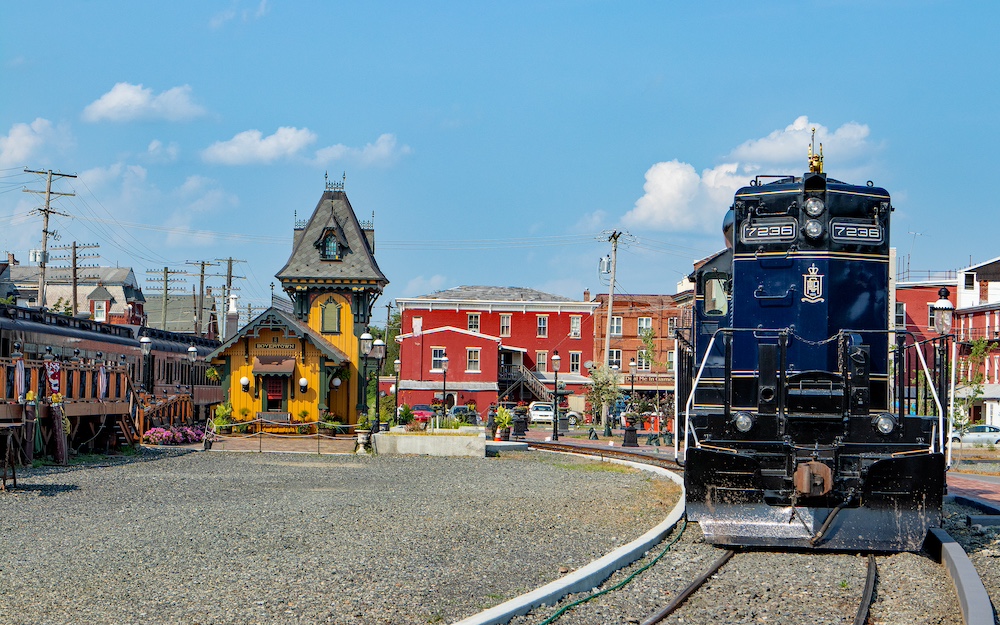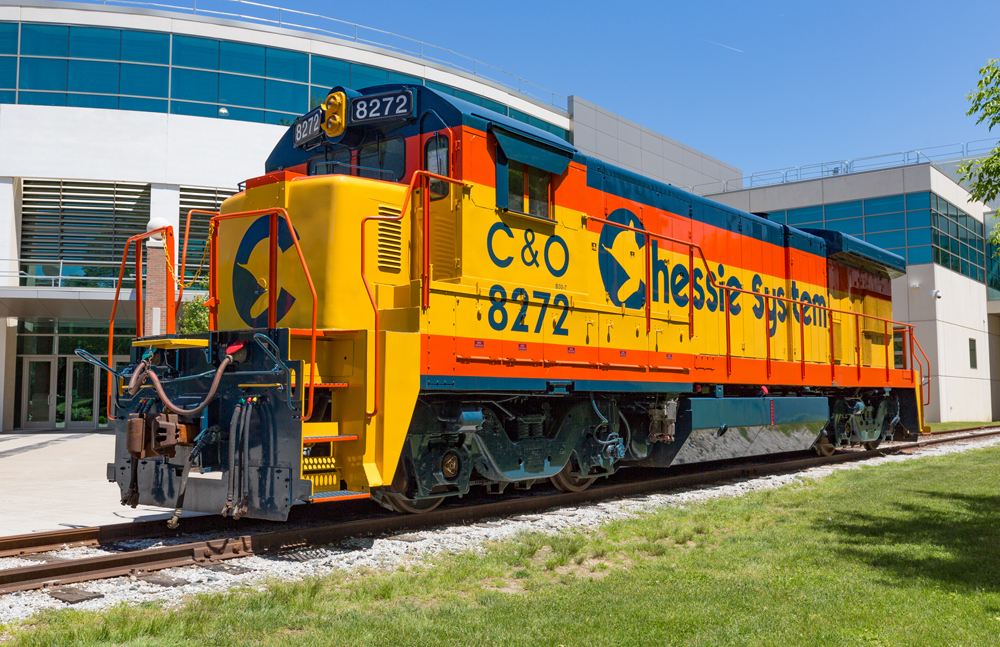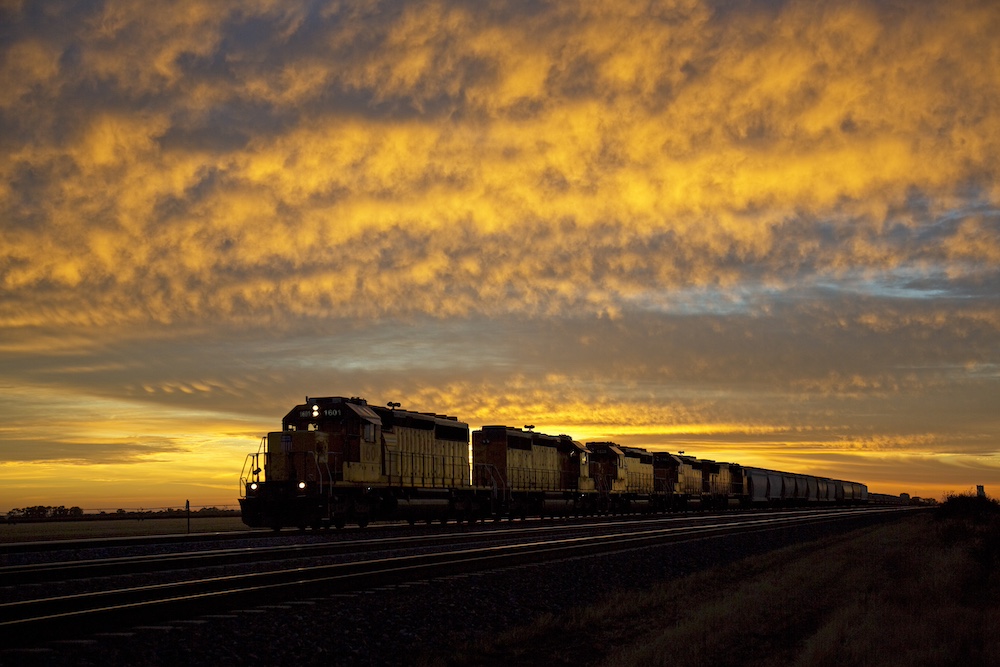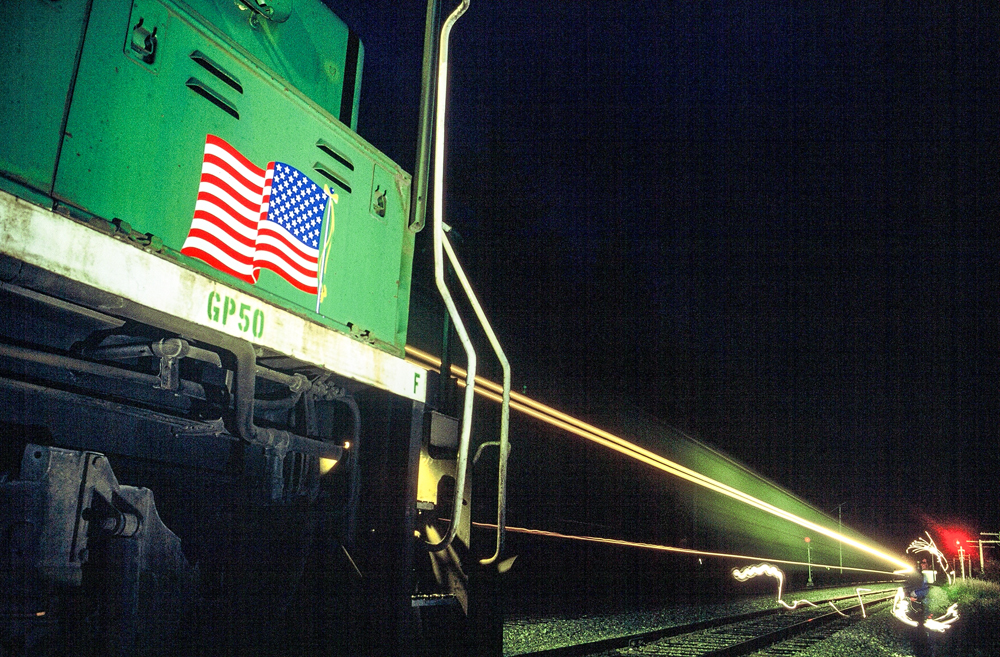As railroad mergers were sweeping the land through the 1960’s, passenger services of individual carriers were on a one-way trip to oblivion, culminating in Amtrak’s formation in 1971. For most roads, this couldn’t happen soon enough, and this attitude, couple with the regulatory obstacles of the day, resulted in two examples of “separate but equal” ticketing during my travels.
On September 2, 1965, 10 months after Norfolk & Western had acquired the Nickel Plate Road and the Wabash, I was in Chicago, ready to head home to Detroit. I’d ridden the obvious direct routes (New York Central, Grand Trunk Western) many times, even an indirect and exotic one (Monon and Wabash via Lafayette, Ind.). But I’d never done the Nickel Plate, and the last train on its Chicago-Buffalo route was up for discontinuance. So I stepped up to the La Salle Street Station ticket counter and asked about a ticket to Detroit, via Fort Wayne and the former Wabash. Sorry. Despite the merger, no new N&W or through tariffs had been filed. The clerk sold me passage to Fort Wayne, and the ticket stock, of course, faithfully read “NYC&StL” and “Nickel Plate Road.”
So did all the rolling stock on train 6, the City of Cleveland, due out at 10:30 p.m. After noting our five-car consist behind GP9 482, I boarded to enjoy a snack and beverage in the lounge car (train opened at 9:30), then found a seat in one of the two coaches. (The two NKP sleeper-lounges were operating on their “proper” namesakes that night – our car was City of Cleveland, and presumably the westbound City of Chicago had that named car in its consist.)
We were on time until somewhere in central Indiana, where the lack of motion awakened me. We sat, and sat. Finally, I heard a freight go by, and we resumed our trek. When we pulled into NKP’s depot on the north side of downtown Fort Wayne, we were a bit behind our scheduled 2:41 a.m. arrival, enough so that my 39-minute (on paper) connection to train 2, the overnight Detroit Limited from St. Louis, across downtown on the south side, was in danger.
I hustled downstairs into the depot and called a taxi. “Be right over.” Then I called the Wabash depot to see if the train, due out at 3:20, had arrived. Yep, said the agent, “She’s a-sittin’ here loadin’ mail. She’ll be here another 5 or 10 minutes.” At least 5 of those minutes expired without my taxi showing up, so I switched to my Plan B. A crewman from 6 was still in the agent’s office, so I knew it wasn’t going to leave before I could run back upstairs and get back on. I paid a cash fare to Fostoria, Ohio.
This busy junction town made for an easy backup plan. Not only was Fostoria served by N&W trains 5 and 6 between Buffalo and Chicago and by four trains on B&O’s Chicago-Pittsburgh main line, it also saw a section of Chesapeake & Ohio’s George Washington between Virginia and Detroit. The northbound version, No. 47, was due into Fostoria at 9:20 a.m., 4 ½ hours after N&W No. 6.
No. 6 deposited me in Fostoria in the pre-dawn hours. There, the driver of the taxi that met the train was intrigued with my brief visit to his town. “Well, the C&O depot won’t open till 8, so why don’t you just ride around with me?” he said. “I have some regular folks I pick up and take to work every morning.” No extra charge. After making his regular runs, we ate breakfast at a downtown café, after which he dropped me at the C&O depot. I explained the deal to the agent, left my suitcase in his car, and hiked south a few blocks to F tower, which guarded the B&O’s diamonds with C&O and New York Central. There I could photograph whatever freights came by and keep tabs on 47 so I would know when to get back to the depot.
The train came in behind E8 4026 with a seven-car consist, and, although I was on a different route from the one I’d planned, I was homeward-bound with an unusual experience to remember. Just in time, too – NKP 5 and 6 came off a week later!
A surprise last run
Two-and-a-half years hence, on February 1, 1968, the Pennsylvania and the New York Central merged, and I was living in Springfield, Ill. Just six weeks after the Penn Central merger, I planned a short trip to Dayton, Ohio, to visit my friend, Lou Marre. My idea was to take train 312, the remnant of NYC’s Southwestern Limited, from St. Louis to Indianapolis, then change to the ex-Pennsy Spirit of St. Louis for Dayton, all trackage being new for me. The former PRR St. Louis service would last until Amtrak, but I knew the last train on the NYC route was on borrowed time. It was down to just an E8 and a single coach and no longer operated east of Union City on the Indiana-Ohio line.
After work on that early St. Patrick’s Day Sunday morning, I took GM&O 5, the Midnight Special, from Springfield to St. Louis, arriving in St. Louis Union Station at 7:27 a.m. After breakfast, I tried my luck at buying a “Penn Central” ticket to Dayton, with the change of trains at Indy. No luck, of course. The ticket stock read “New York Central” on the St. Louis-Indy portion and “Pennsylvania” on the Dayton leg.
In due time I boarded NYC coach 3035, standing at the bumping post behind E8 4048, for the 9:40 departure. The car began to fill up. Soon I heard conversation that bore investigation. Then I confirmed from a crewman what I’d overheard – this was the train’s last run! Discontinuance had been granted the night before. Never in all my travels had I unknowingly stumbled onto a last run, nor has it occurred since.
Most of the trip up the old Big Four that gray day was routine. We met 341, our westbound counterpart, near Shelbyville, Ill., passing each other slowly. Both vestibules were jammed with railroaders and riders waving hearty farewells. At Mattoon, Ill., a crew-change point, there was time for the traditional “last run” photo of the crews posing beside the diesel. As we neared Indy, the yardmaster at the big Avon Yard apparently forgot about us, for we left the main to wander through the huge facility amidst hundreds of freight cars. Despite this, I had ample time at Union Station after our 2:55 p.m. arrival (5 minutes early!) to wait for 30 and its scheduled 4:55 departure for Dayton.
After my visit, I returned to St. Louis on the counterpart Spirit, train 31. It came into Dayton an hour late, but schedule-padding put us into St. Louis only 40 minutes down. No matter – I had two hours before the 2:40 departure of Illinois Central 22, the Green Diamond, for Springfield. My Dayton-St. Louis route was, of course, former PRR all the way – I had no choice.









Two nice stories – thanks for publishing. I grew up in Mattoon on the IC and NYC but we also had the Nickel Plate from St. Louis just eight miles south of town. One of my favorite childhood memories is watching New York Central trains pass though town. My dad regularly drove by the yard on the east side of town where we’d park next to idling Geeps, and wait on an evening train or two. We’d taken Illinois Central passenger trains from Mattoon many times but for some reason never took the New York Central to St. Louis or Indianapolis. After the merger, we did talk about it a couple times. The local paper wasn’t published on Sunday so we had no idea the last NYC passenger trains had run that day. I remember the disappointment knowing we could now never take a NYC train from Mattoon. Conrail took up the tracks in 1982 which was an even sadder event.